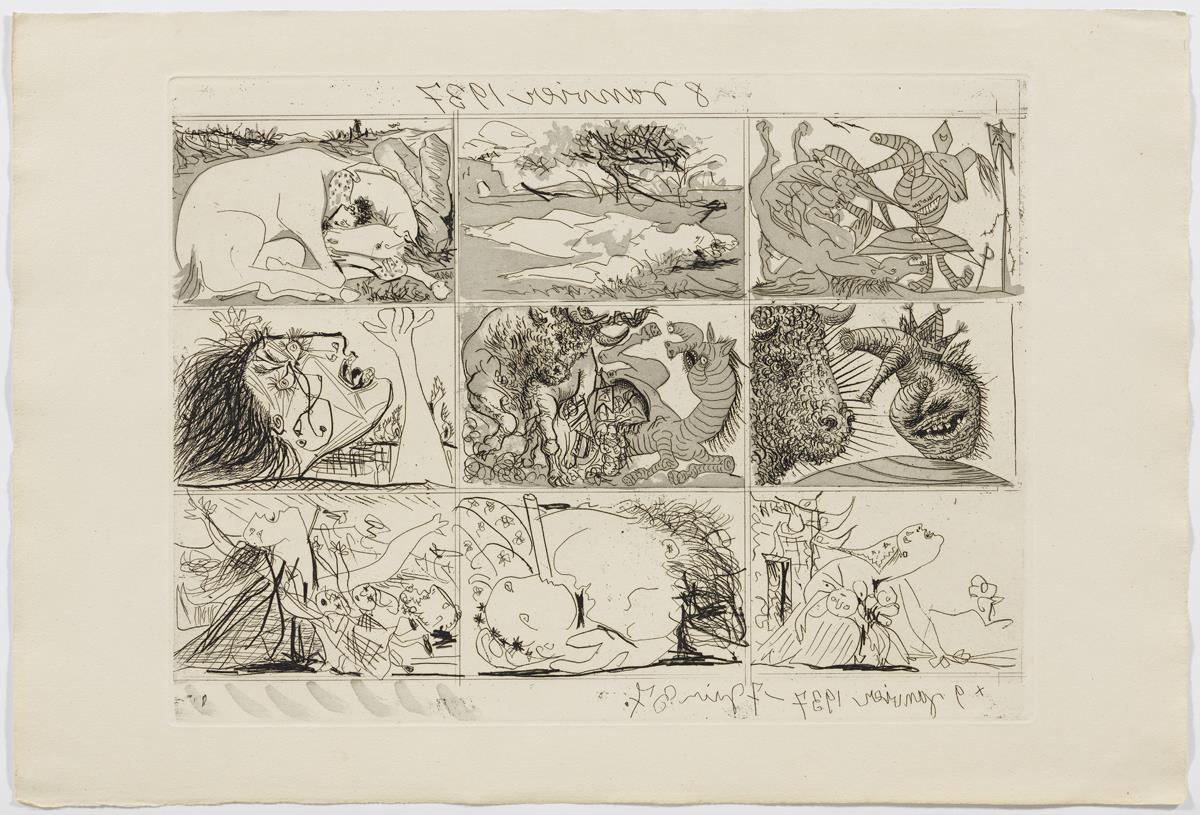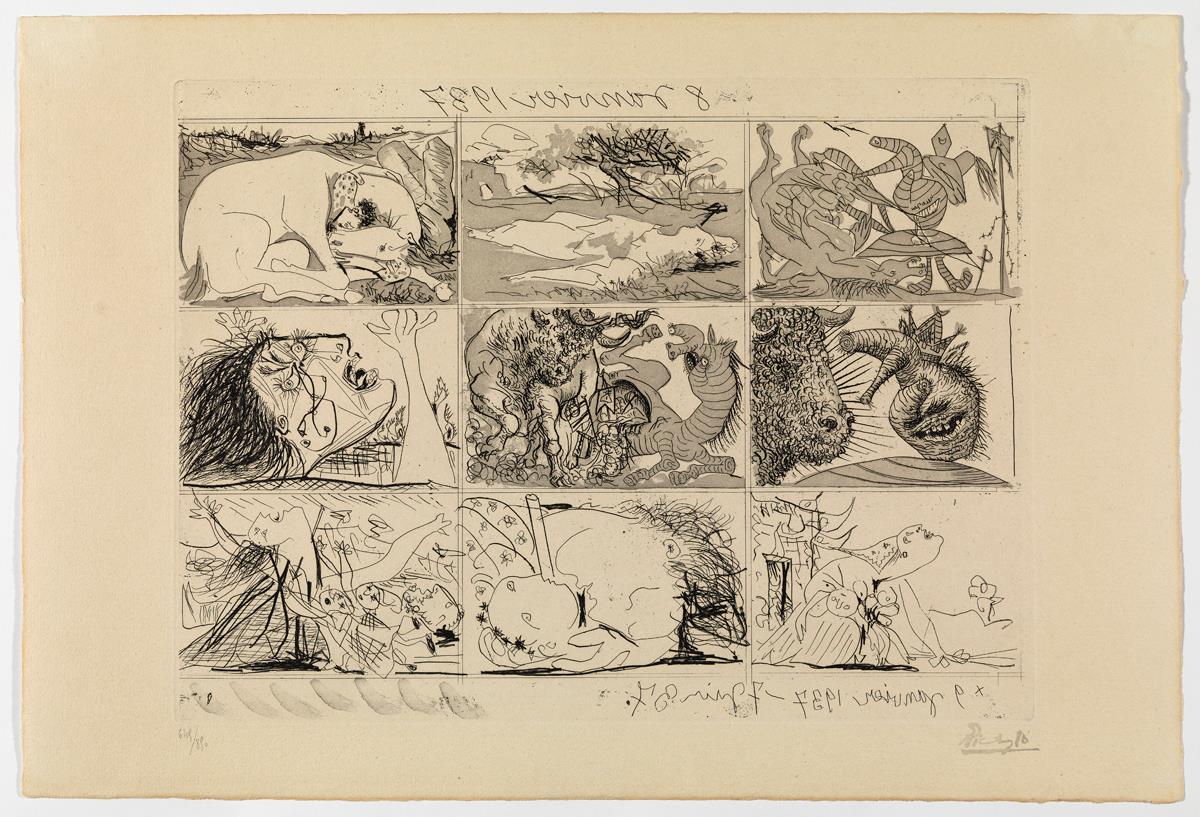Dream and Lie of Franco (plate II)

Dream and Lie of Franco (plate II)
1937
Dream and Lie of Franco (plate II)
Between 8 January and 7 June 1937 in Paris, Picasso etched two copper plates conceived as a couplet, that is, as a set of consecutive vignettes that tell a story. The final result was made up of 18 interconnected images—nine on each plate—without a clear narrative thread but with a common goal: to denounce the military coup d’état of 18 July 1936 against the legitimate government of the Spanish Republic. The first plate, which Picasso produced on 8 January 1937 in two states, is a scathing satire against the insurgents, embodied in the leading figure of a medieval Christian knight—undoubtedly General Francisco Franco—whose deeds and religiousness Picasso ridicules mercilessly: depicting him as a tightrope walker with a giant phallus, cross-dressed as a maja, riding on the back of a pig or praying before a tabernacle containing sacred money, etc., this grotesque character exudes the iconographic and conceptual influence of the protagonist of the play “Ubu Roi” by Alfred Jarry, premiered at the Nouveau Théâtre in Paris in 1897. The second plate, produced in five states in 8 and 9 January and in 7 June 1937, focuses on the ravages caused by the Spanish Civil War—the influence of Goya’s “The Disasters of War” is undeniable here—and especially the suffering of the victims, conveyed through some of the iconography also present in “Guernica”, which the artist had just completed. In addition, the iconography of the “crying woman” appears here for the first time.
Both plates were printed in June 1937 in Roger Lacourière’s workshop in Paris, and two print runs were carried out: one of 150 copies on China paper glued on Japan paper (signed and numbered) and another of 850 copies on laid Montval paper (stamp-signed and numbered). Picasso himself took charge of the edition and presented it in a cardboard portfolio covered in tinted vellum paper that included the two prints and a sheet with the hand-written text of a poem that the artist had penned between 15 and 18 June (on the back, the typed version of the poem in Spanish and French). The title, “The Dream and Lie of Franco”, appears in handwritten cursive facsimile on the cover of each portfolio, which were exhibited and put up for sale in the Pavilion of the Spanish Republic at the 1937 Exposition Internationale in Paris in order to raise funds for the Republic’s cause. Thus, taking sides in favour of the republican movement, Picasso became part of a large, heterogeneous group of artists (cartoonists, graphic artists, illustrators, poster artists, painters, etc.) who chose to fight in the artistic trenches, an “army of the arts”, in the words of poet Vladimir Mayakovsky, that enjoyed a privileged showcase in the aforementioned Pavilion. As a form of coda, in June 1939, Picasso granted permission to divide the prints into individual vignettes in postcard format so they could be sold to raise money for the Spanish republican movement’s aid fund.
The Museu Picasso preserves a copy of the portfolio “The Dream and Lie of Franco” (currently catalogued as an illustrated book) that the artist gave and dedicated to Jaume Sabartés, as well as two additional prints (MPB 112.423 and 112.424).
1937
31.7 cm x 42.2 cm
Purchase, 2017
MPB 115.003.3




